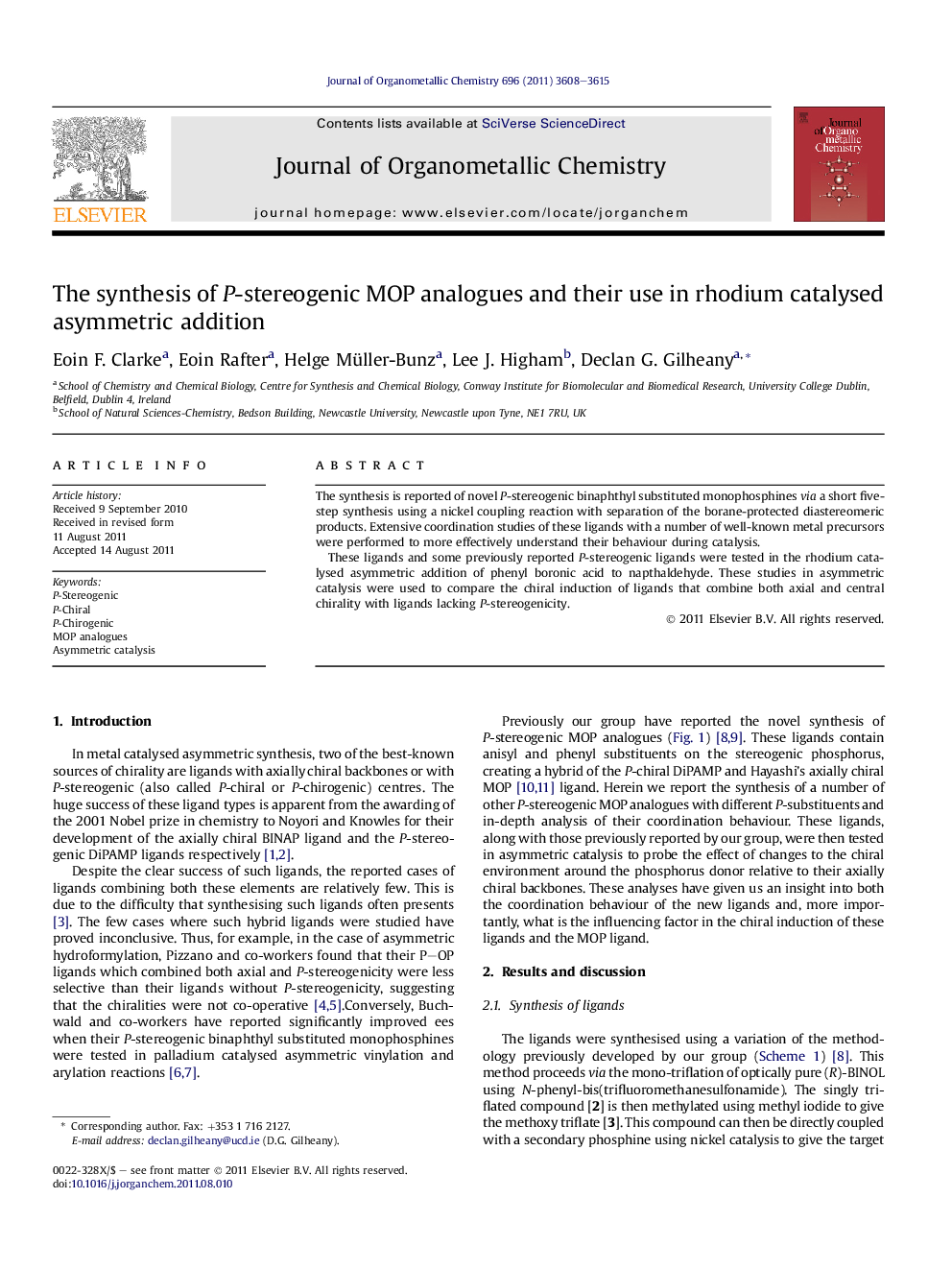| Article ID | Journal | Published Year | Pages | File Type |
|---|---|---|---|---|
| 1325095 | Journal of Organometallic Chemistry | 2011 | 8 Pages |
The synthesis is reported of novel P-stereogenic binaphthyl substituted monophosphines via a short five-step synthesis using a nickel coupling reaction with separation of the borane-protected diastereomeric products. Extensive coordination studies of these ligands with a number of well-known metal precursors were performed to more effectively understand their behaviour during catalysis.These ligands and some previously reported P-stereogenic ligands were tested in the rhodium catalysed asymmetric addition of phenyl boronic acid to napthaldehyde. These studies in asymmetric catalysis were used to compare the chiral induction of ligands that combine both axial and central chirality with ligands lacking P-stereogenicity.
Graphical abstract1) A Novel method for the synthesis of monodentate ligands combining both axial and central chirality. 2) New P-chiral analogues of the MOP ligand synthesised. 3) Extensive coordination studies of these ligands were performed with a number of well-known metal precursors. 4) New ligands tested in rhodium catalysed asymmetric addition of phenyl boronic acid to napthaldehyde. 5) The selectivity of these new ligands compared to the well-known MOP ligands to judge the effect of the P-chirality on catalyst selectivity.Figure optionsDownload full-size imageDownload as PowerPoint slideHighlights► P-chiral analogues of MOP ligand synthesised through convergent 6-step synthesis. ► Studies show ligands coordinate through the phosphine and the σ-bond to carbon. ► Significant effect of P-chirality in rhodium catalysed asymmetric additions.
